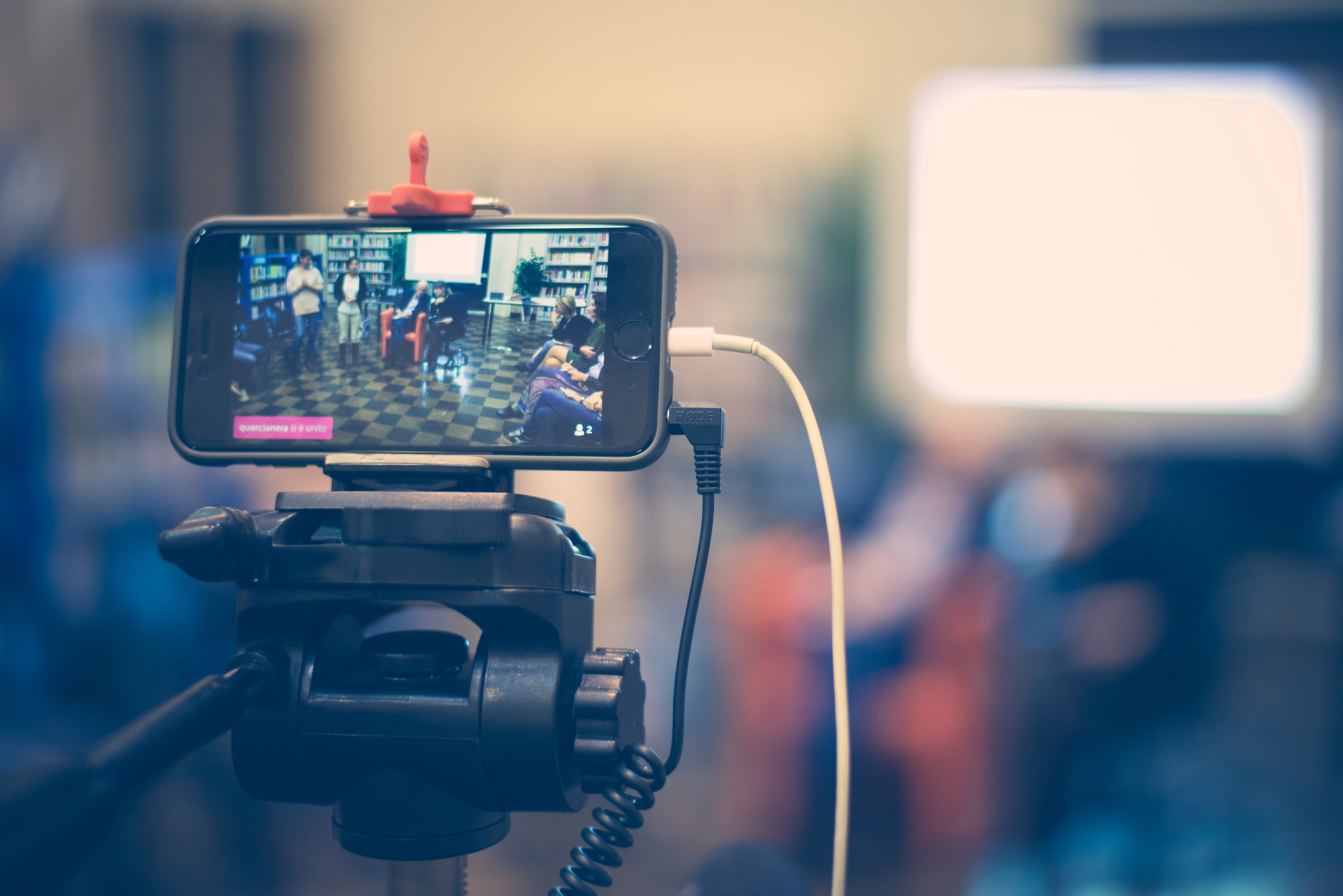Periscope: the app that makes visible what had (up to now) been invisible
Hundreds of people in the Brussels attacks broadcast the atrocities they were witnessing live. They did this using Periscope, an app that enables you to show and view life in real time. One year after its creation, this app now has more than 10 million active accounts and has allowed visibility to be given to things which some authorities would prefer to keep invisible, such as the refugee drama with broadcasts by the Bild reporter Paul Ronzheimer, the Baltimore riots, and the attacks on Paris and Brussels. And, what's more, this was all done live.
According to a study published by the BBC, by 2021, more hours of content will be consumed live than by conventional means. The revolution of live-streaming videos has arrived, and it goes beyond the mere entertainment value provided by celebrities such as Gerard Piqué, Beyoncé and Katy Perry, to name but a few of those who have felt the desire to reveal their lives to us through Periscope. This really is a revolution on many different levels.
A perfect tool for reporting
Kayvon Beykpour, one of the app's creators, started working on the idea after seeing the impossibility of broadcasting what was happening in the protests in Taksim Square against the Turkish Government in August 2013. "Periscope enables users to cut through censorship or to make the abuse of power visible," explains Toni Roig, professor of Information and Communication Sciences at the UOC. "The speed and ease of transmitting via our smartphones, the 'transparency of transmitting live', the interconnection with Twitter and the possibility to incorporate comments whilst broadcasting live are the keys to its success," believes this expert.
Periscope had a presence in the Brussels attacks and many live broadcasts were made by users transmitting from some of the blackest points in the city. Periscope is a "revolution of immediacy for the world of journalism but which also opens up new ethical and legal questions in certain instances," explains Roig.
Live-streaming is here to stay
Periscope was born on 26 March 2015 and within only four months had two million active users per day and was named iPhone App of the Year by Apple. "That the future of social networks will be live video is demonstrated by the fact that live-streaming broadcasts of events or celebrities (something that is highly valued by advertisers and sponsors) achieve a large following thanks to their spontaneity, for living the moment 'here and now'. Testimonies 'recorded live' are very well received," claims Toni Roig.
For Sílvia Martínez, professor at the UOC's Faculty of Information and Communication Sciences, "live-streaming has become part of so-called content consumption on social media that fosters connectivity and comment amongst users". The two-way communication of this tool between broadcaster and receiver is one of the keys to its success.
Periscope and the exhibitionism of celebrities
Celebrities that flee from cameras whilst revealing their daily lives on social media. A contradiction amongst celebrities that, according to Manuel Armayones, professor of Psychology at the UOC, responds to different types of needs: "to show us their lives with the aim of being seen to be more like one of us, to control the information flow generated around them, and in some cases, there is also a hint of narcissism".
"Exhibitionism online responds to many needs: approval, feedback, belonging to a group and, in some cases, also for purely narcissistic reasons," claims Armayones. "Everyone ends up showing want they want, meaning that they show that which is most important to them," explains the psychologist. For celebrities it is a tool that "allows them to cross the border from intimacy to 'extimacy', a kind of 'public intimacy'. They can leave behind their own image to project another one to the world". At the same time, though, "it can work against them if, for example, someone is transmitting situations they are involved in but where they are not aware that they are being filmed," explains the psychologist.
According to Francesc Núñez, a sociologist at the UOC, "the appearance of ICTs and new spaces for digital communication, and the age of consumerism, make the intimate spill out from its private space and implode into the public space".
Brand names also join in the game
The fact that popular personalities use it "helps to extend the uptake of this app and increase its use amongst a high number of users, making it an attractive distribution channel for brands and companies,"" assures Sílvia Martínez, director of the postgraduate course in Social Media Content at the UOC.
Many brand names have started using Periscope, including Bershka, Balmain, Asos, Adidas, General Electric, etc. Additionally, Neus Soler, expert in marketing at the UOC, explains that the app "unifies a series of factors to boost certain marketing strategies based on: the use of video, which is constantly becoming more valued for its dynamism, and for the possibility of it going viral; streaming technology, which conveys a novel, creative and modern image of the company; and real-time marketing, which enables content to be offered in real time, such as advertising campaigns, events and promotions". The transparency of transmitting live "brings the brand closer to the user and enhances engagement with the broadcaster," concludes Soler.
Experts UOC
Press contact
-
Editorial department
